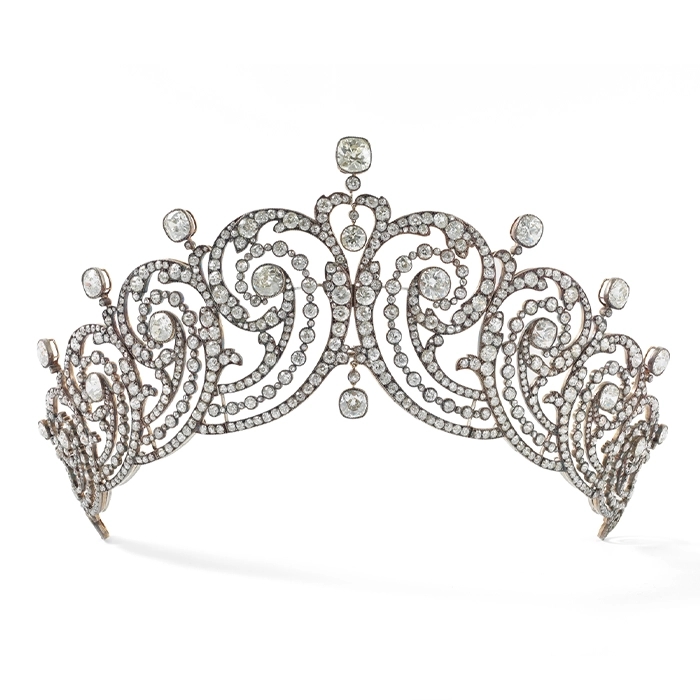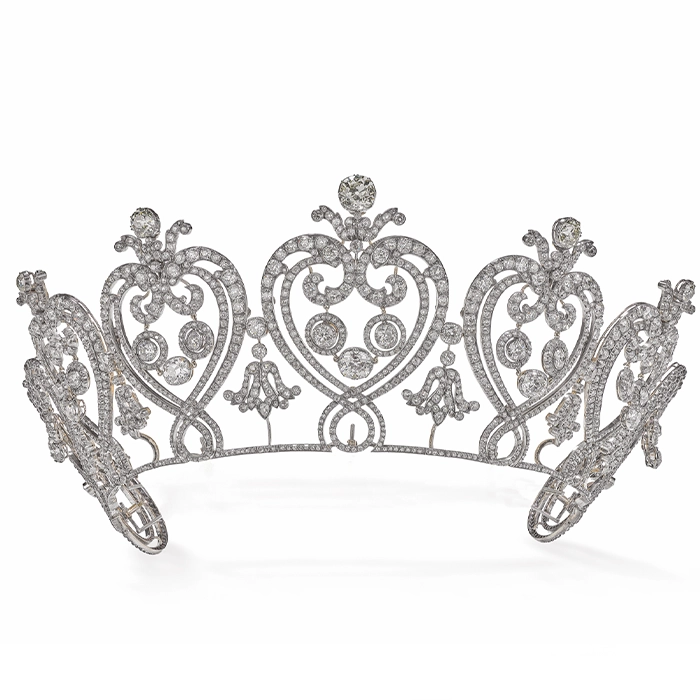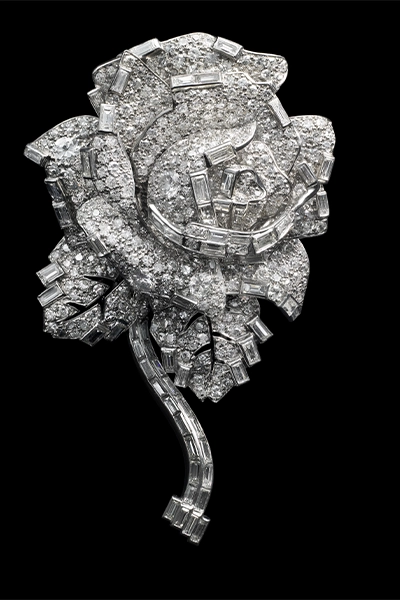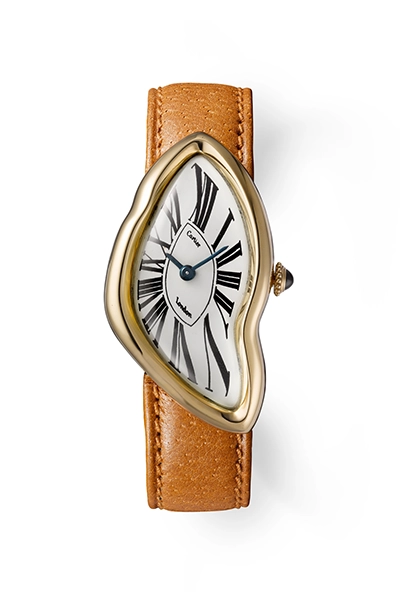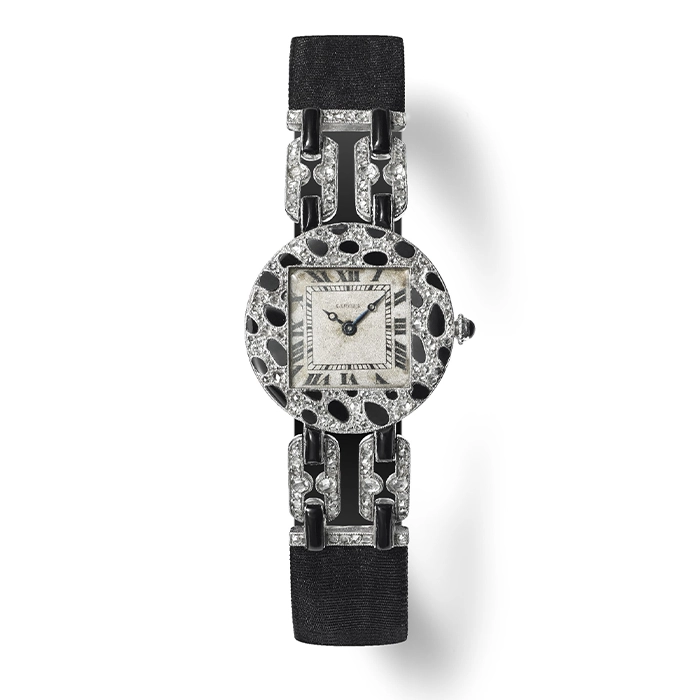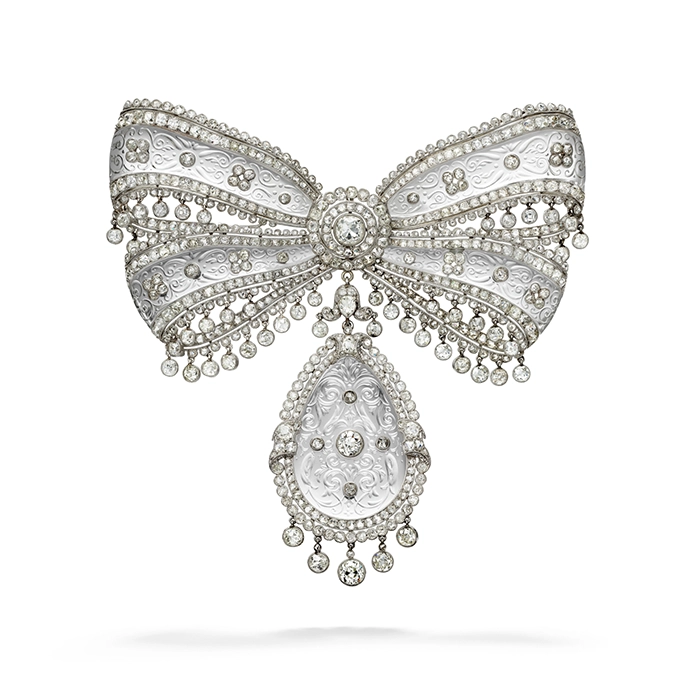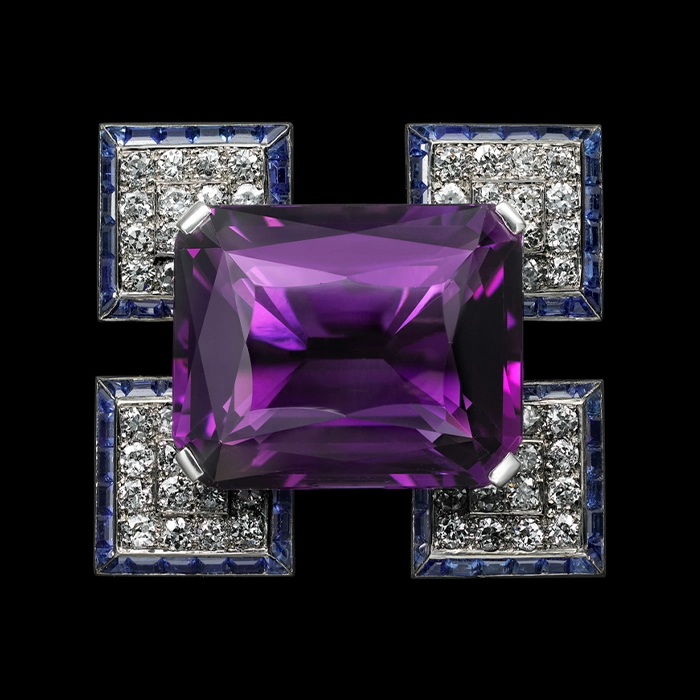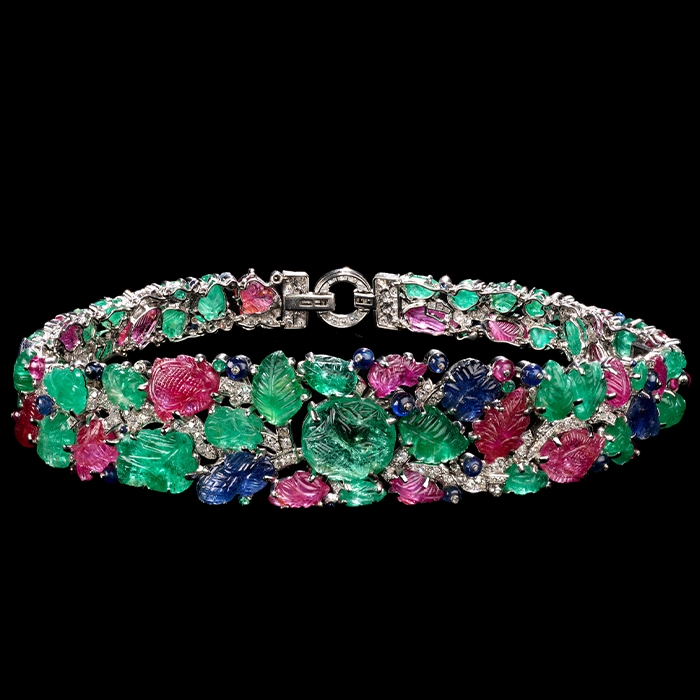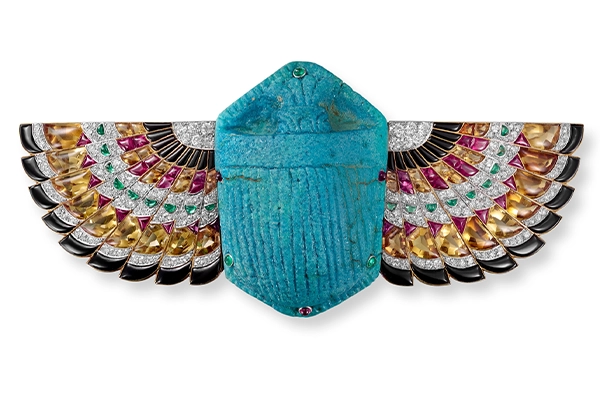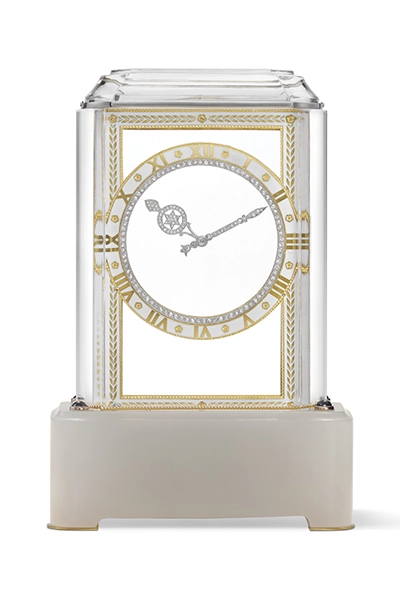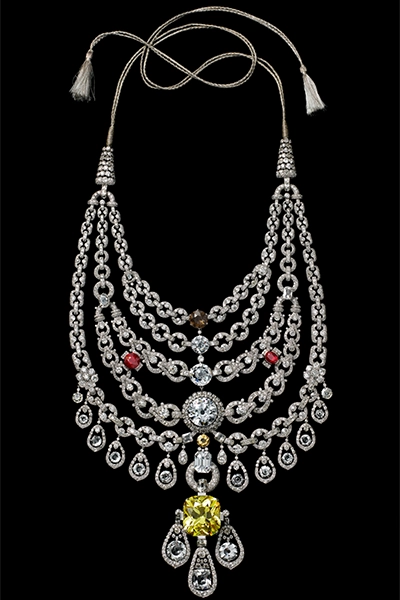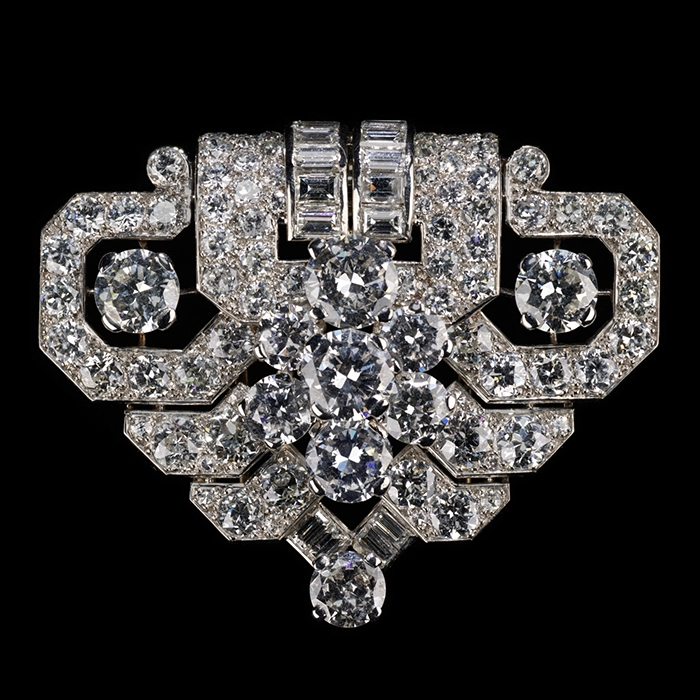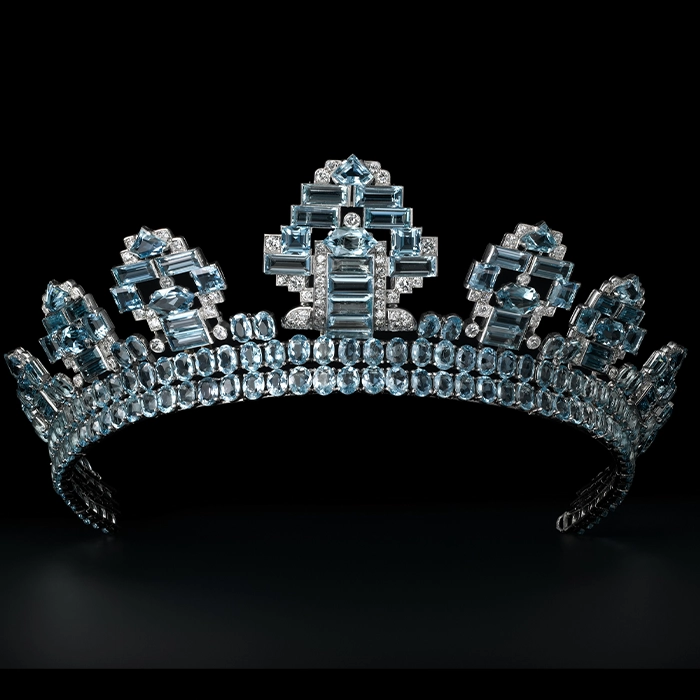12 February 2025
Cartier: The jeweller of kings and the king of jewellers
6 minutes
V&A Cartier exhibition charts the evolution of art, design and craftsmanship since the turn of the 20th century and includes jewels lent by His Majesty The King from the Royal Collection.
When founder Louis-Francois Cartier’s three grandsons set out to create the first globally recognised jewellery house, they adopted a strategy of original design, exceptional craftmanship and international expansion that transformed the Parisian family jeweller into a household name.
With branches in Paris, London and New York they secured a client list of royalty and aristocracy to become known as ‘the jeweller of kings and the king of jewellers’. Cartier’s appeal then broadened to wealthy creatives across the worlds of cinema, music and fashion.
On April 12, 2025, the V&A Museum, in London, opens the first major exhibition in almost 30 years dedicated to Cartier jewels including works lent by His Majesty The King from the Royal Collection.
Featuring more than 350 objects, the exhibition documents the evolution of art, design and craftsmanship since the turn of the 20th century.
The finest pink diamond in existence
Highlights of the exhibition include the Williamson Diamond brooch commissioned by Queen Elizabeth II in 1953, featuring the 23.6 carat pink Williamson diamond. The jonquil flower brooch set with diamonds has a circular pink diamond in the centre – the finest pink diamond in existence. Canadian geologist and royalist Dr John Thoburn Williamson presented the diamond to Queen Elizabeth II as a wedding present in 1947 and she had the stone cut and set into this brooch.
Among the tiaras on display is the Scroll Tiara commissioned in 1902 for Adele, Countess of Essex, which she wore to the coronation of Edward VII in 1902. Later, Clementine Churchill, wife of former British Prime Minister Winston Churchill, wore the tiara to the coronation of Queen Elizabeth II.
In 1990, Eric Nussbaum, the then-director of the Cartier Collection, bought the tiara and it has been in the Cartier Collection ever since. Singer Rihanna wore the tiara on the cover of W magazine in 2016.
|
(Image: Scroll tiara, Cartier Paris, commissioned for the Countess of Essex in 1902. Diamonds, silver and gold. Nils Herrmann, Collection Cartier © Cartier) |
(Image: Manchester Tiara, Harnichard for Cartier Paris, 1903. Commission for Consuelo, Dowager Duchess of Manchester. Diamonds, gold and silver; the C-scroll at each end set with glass paste. © Victoria and Albert Museum, London) |
|
|
The majestic Manchester Tiara from the V&A collection was made by Cartier in 1903 to the order of Consuelo, Dowager Duchess of Manchester (1858-1909). Cartier’s records note she supplied more than 1,000 brilliant-cut diamonds and more than 400 rose-cut diamonds, while Cartier supplied further rose-cut diamonds and the paste stones which make up the scrolls at the end of each side. This tiara of graduated flaming hearts and C scrolls was inspired by a vision of France before the Revolution. A 1938 rose clip brooch of diamonds and platinum worn by Princess Margaret at her sister’s coronation, by Vincent Wulveryck, is also from the Cartier Collection. (Image: Rose clip brooch, Cartier London, 1938. Diamonds and platinum. Vincent Wulveryck, Collection Cartier © Cartier) |
One of the most famous engagement rings in the world
Grace of Monaco’s engagement ring features a 10.48-emerald cut diamond flanked by two baguettes set in platinum. She wore the ring in her final film High Society (1956), making it one of the most famous engagement rings in the world.
|
|
The exhibition also features Cartier timepieces including a 1967 Crash wristwatch, designed by Cartier London and a ‘Model A’ Mystery Clock, made by Coüet for Cartier Paris in 1914. The ‘Mystery’ comes from its two bejewelled hands appearing to be floating in a crystal-clear case without a hint of mechanical parts. Exhibition curators Helen Molesworth and Rachel Garrahan said: “Cartier is one of the most famous jewellery houses in the world and we celebrate the pioneering achievements of Cartier and its transformative ability to remain at the centre of culture and creativity. “We are excited to share some of Cartier’s most famous creations as well as revealing previously unseen objects and archive material that further enriches our understanding of a jewellery house that continues to influence the way we adorn ourselves today. |
(Image: Crash Wristwatch, made by Wright & Davies for Cartier London, 1967. Sapphire, gold, blued steel and leather strap. Vincent Wulveryck, Collection Cartier © Cartier)
“Across three main sections the exhibition explores the creativity of Cartier and the emergence of its signature style, the legacy of its technical ingenuity and craftsmanship, as well as its sophisticated approach to image-making and maintaining its legacy and relevance in a changing world.”
|
(Image: Panther skin wristwatch. Cartier Paris, 1914. Onyx, diamonds, pink gold, platinum and black moiré strap. Nils Herrmann, Collection Cartier © Cartier) |
(Image: Stomacher Brooch, Cartier Paris, special order, 1913. Carved crystal, diamonds and platinum. Marian Gérard, Cartier Collection © Cartier) |
|
(Image: Brooch, Cartier London, 1933. Amethyst, sapphires, diamonds and platinum. Vincent Wulveryck, Collection Cartier © Cartier) |
(Image: Mountbatten Bandeau in Tutti Frutti style, English Art Works for Cartier London, 1928. Emeralds, rubies, sapphires, diamonds and platinum © Victoria and Albert Museum, London) |
|
(Image: Scarab Brooch, Cartier London, 1925. Blueglazed Egyptian faience with rubies, emeralds, citrine, diamonds, onyx, platinum and gold. Nils Herrmann, Collection Cartier © Cartier) |
(Image: 'Model A’ Mystery Clock, Made by Coüet for Cartier Paris, 1914. Sold to Count Greffulhe. Rock crystal, agate, diamond, sapphire, enamel, gold, platinum with eight-day movement. Nils Herrmann, Collection Cartier © Cartier) |
|
(Image: Patiala Necklace, Cartier Paris, special order, 1928 (restored 1999–2002). Commissioned by Bhupinder Singh, Maharajah of Patiala. Diamonds, yellow and white zirconia, topaz, synthetic rubies, smoky quartz, citrine set in platinum. Vincent Wulveryck, Collection Cartier © Cartier) |
(Image: Late Art Deco period brooch. Cartier London, commissioned by Cartier London salesman Ernest Schwaiger for his wife, actor Adele Dixon, 1940. Diamonds and platinum © Victoria and Albert Museum, London) |
(Image: Tiara, Cartier London, 1937. Aquamarine, diamonds and platinum. Vincent Wulveryck, Collection Cartier © Cartier) |
Visit vam.ac.uk
Cartier Curated auction
To coincide with the Cartier exhibition, Lyon & Turnbull’s Cartier Curated online auction is on April 29, 2025. Lots include a rare 1970s Cartier 18k gold reversible wristwatch which has two movements with two dials, estimate £25,000-£30,000.
A Cartier London 1930 Art Deco rock crystal, silver, coral, black and red lacquer Demi-Mystery Barometer is also among the lots, estimate £25,000-£35,000. The barometer is created in almost exactly the same manner as Cartier’s Mystery Clocks and was thought to have been made as a one-off for a high-ranking British Naval officer or shipping magnate.
Visit lyonandturnbull.com
Insurance and valuations
Whether you are a long-term collector or new to buying exquisite jewellery, watches or clocks, these examples highlight the importance of regular valuations.
Insurers recommend that you obtain a valuation at least every five years, preferably three in today’s market. But check your schedule and policy wording for specific requirements.
Insurers will require any valuation to be for “insurance purposes” and usually for retail value. You should also consider how you would replace your collectible in the event of a loss. Would you want a brand new replacement with a modern equivalent (New Replacement Value), second hand replacement value (which can be more than the retail value if there’s a waiting list for a piece) or would you prefer an antique replacement (Antique Replacement Value)?
Ensure the items are photographed, kept in good condition and your documentation, including serial number on the watch and boxes, is in a safe place to help in the event of a claim. It’s a good idea to send a copy of your valuations to your broker, whether or not the insurer requires it.
Howden are specialists in finding jewellery insurance solutions. We can point you in the direction of trusted valuation experts and then arrange a policy which will protect your passion and investment.
To speak to us about insuring your jewellery call 020 8256 4901 or email privateclients@howdeninsurance.co.uk

